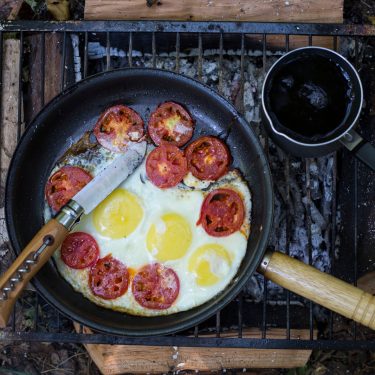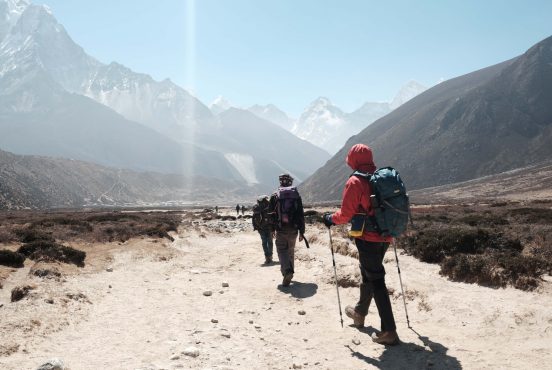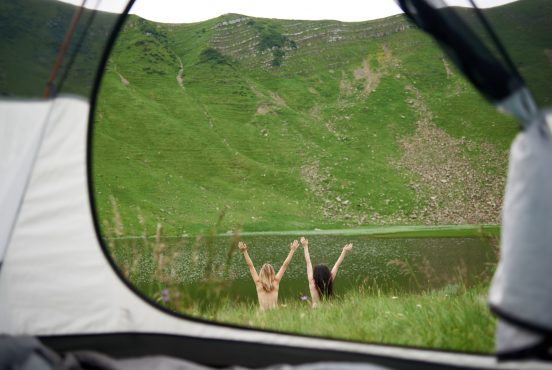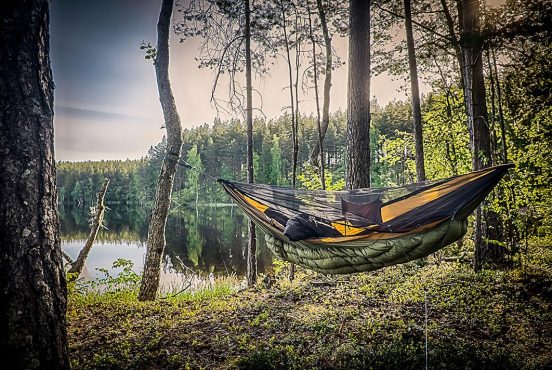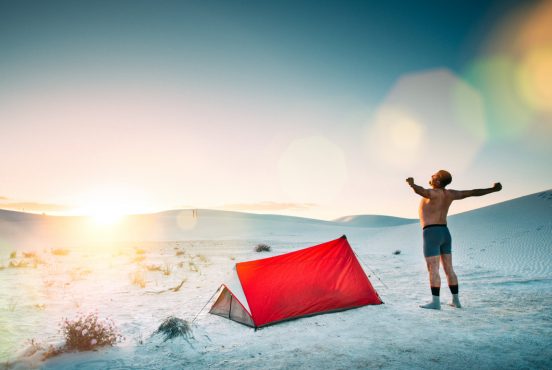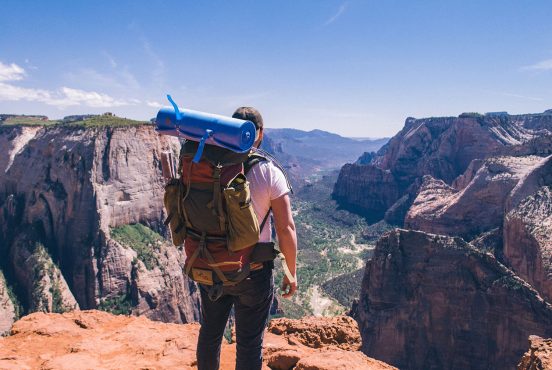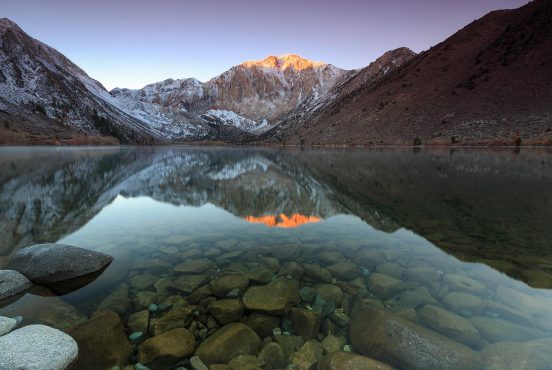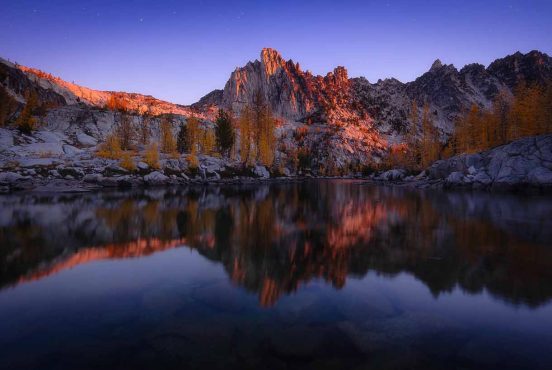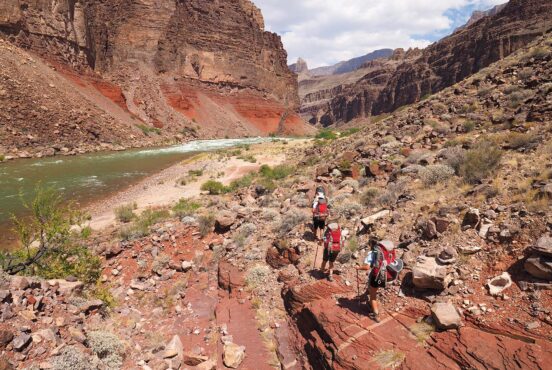Being in the wild is dope, and so is keeping it clean for future generations. If you’re hiking, camping or backpacking, you can minimize your impact on the environment with Leave No Trace principles and ensure everyone has a good time with basic trail etiquette tips. Now let’s get wild.
Backpacking without a stove is the easiest, leanest, and safest way to wander the wilderness.
Hikers who are new to backpacking and experienced backcountry explorers both can reap major benefits from opting to go stoveless.
There are a number of reasons why you’ll be better off leaving your stove at home and, contrary to your underlying concerns that trail mix will become a staple main course of your backwoods diet, there are countless backpacking meals that you can enjoy without a fire or boiled water.
It’s easy to make the switch once you break past that initial mental barrier.
“But I need a hot dinner before getting into my sleeping bag to keep me warm,” your brain may say, or perhaps, “I have to have hot coffee in the morning to keep me sane.”
Baloney to that, I say. Speaking of which, bologna can be a great no-cook snack!
You don’t need to jump straight into a 100% stoveless lifestyle for every adventure — I’m not trying to convince you of that. The benefits of backpacking without a stove may convince you to give it a try on your next outing, though.
The Benefits Of Going Stoveless
The first and foremost reason someone would consider going stoveless is to save weight.
Ultralight hikers, for instance, tend to toss away all of their vices and unnecessary dependencies to shed every ounce to become as lean and as fast as possible. If you’re looking to go as ultralight as possible, you’re going to have to cut out your stove eventually.
The weight of your stove is only a part of your added cooking weight, however. Fuel adds ounces into your pack, as do your personalized assortment of cups, bowls, and utensils. Combined, all of these items can add a serious amount of weight to your back, and they also cost a lot of money.
By deleting your cooking setup, you can save big bucks. The initial costs of purchasing all of this equipment can be a slap in the face if you splurge on top-tier cookery, and the recurring costs of fuel and expensive pre-packaged ready-to-cook meals can add up fast.
Perhaps more important than both weight and money is your time. Cooking meals takes time that you could otherwise use to hike more miles, bird watch, swim in a lake, or stare off into the sunset. You’ll save time for every meal you don’t cook, and that time can be better spent enjoying the outdoors.
Also, because you don’t need a massive amount of water for boiling pasta, you’ll be able to take advantage of more camping locations. I started out my backpacking career without a stove, and I was always befuddled as to why everyone else seemed to be reliant upon camping spots near water sources.
I would already be carrying all of the water I needed, which wasn’t much, so why would I need to find a camping spot next to a creek? The thing is, I didn’t know at the time that cooking requires so much more water than does backpacking stoveless.
It took me a long time to make the connection that all of the water-bound backpackers needed a lake or river to feed their “need” for a home-cooked pre-packaged dehydrated and then rehydrated hot bag of chicken parmigiana.
Lastly, backpacking without a stove is much safer than cooking meals with fuel and fire. The odds are that the average backpacker won’t start the next disastrous forest fire, but it can —and does — happen. I’ve seen backpackers accidentally light small patches of grass on fire and I know someone who lit their tent on fire, deservedly earning the trail name Tentfire.
Accidents happen, and sometimes people can get foolish. It’s easier to remove the danger than it is to be totally safe and aware at all times when handling flammable materials.
The Drawbacks Of Going Stoveless
Despite the amazing benefits of going stoveless, there are some notable drawbacks.
The most obvious is that all of your meals will be cold. Some (well, maybe most people) will scoff at the idea of cold coffee in the morning and a cold-soaked pack of Ramen for dinner.
There are few things better in life than a good meal. I’ll agree to that, but can you really say that your Mountain House beef stroganoff is going to be the most memorable part of your hike? I doubt it.
That said, there are fewer options available for strictly stoveless backpackers. Anything that is available to a stoveless backpacker is also available to someone with a stove in addition to their gourmet meals.
What might not be at first noticeable, but can really drag your spirits into the dirt by the end of the day, is that when you backpack without a stove your breaks tend to be shorter. That ties right into the saving time benefit, but you have to be well aware of that time to make proper use of it.
Shorter breaks may be a benefit for some people, and it can be an exhausting drawback for others. I find myself unaware of how little time I’ve spent taking breaks when I go stoveless, and I often end up eating as I walk, completely erasing my much needed breaks. That’s not good, especially on long trips. Sometimes you need to force yourself to slow down, let your body rest, and take in the beauty which surrounds you.
What You’ll Need To Go Stoveless
Honestly, the list is pretty short. When backpacking without a stove you can eat most food right from the package it came in.
I’m always prepared to cold-soak some of my meals, though. Cold-soaking is a process in which cold or lukewarm water is used to rehydrate dehydrated foods like Ramen or instant potatoes. Almost anything that you can cook in water on your backpacking stove can be rehydrated via cold-soaking — it just takes more time.
For cold-soaking, you’ll need a watertight or near watertight container large enough to fit your food and the water you’ll need to rehydrate it. You’ll want to leave extra space in the container for the food to expand as it rehydrates, which most of the time it will.
I prefer using Ziploc Twist ‘N Loc containers which can take quite a beating and handle heat well if you ever do fill them with hot water.
Other than that, a trusty long spoon or spork like the Sea to Summit Alpha Light Spork is all you’ll need to enjoy your cold-soaked meals.
Stoveless Backpacking Meal Ideas
The possibilities are only limited by your imagination. Sure, nothing you’ll make without a stove is going to be hot, but the grocery store shelves are packed with ready-to-eat foods that can last for days in your backpack, and anything that says “instant” on the packaging can be cold-soaked and rehydrated for a tasty, albeit cold, meal.
Below are several stoveless backpacking meal ideas to get you started. If you want even more backpacking meal ideas, check out our list of 40+ Backpacking and Camping Foods That Don’t Require Refrigeration.
Oatmeal
Instant oatmeal will rehydrate in a flash for a quick and easy breakfast. You can mix in nuts, berries, dried fruit, cinnamon, brown sugar, or just about anything you’d put in your oatmeal at home.
Tortilla Wraps
Experienced backpackers are well aware of the endless array of tortilla wraps that have been concocted out on the trail. I suggest tuna fish and mayo or peanut butter and M&Ms as a couple of starter ideas. Tortilla wraps can work for a snack or any meal throughout the day.
I’ve made hiker tortilla wraps with salami and mustard, spam and cheese, avocado, Nutella, and rehydrated refried beans, just to name a few more common options.
However, when hikers get hungry they get desperate, and I’ve seen some wacky combinations stuffed into tortillas including crumbled Pop-Tarts with banana chips and honey. Hey, that actually doesn’t sound half bad now that I think about it.
Instant Noodles and Rice
Ramen is the classic choice, but your average grocery store is bound to have an assortment of instant noodle and rice options. Uncle Ben’s Ready Rice and Backpacker’s Pantry Instant White Rice will serve as great bases that you can mix any combination of toppings, sauces, and spices to suit your palette.
All of these “instant” carbs require only a bit of cold water to fully rehydrate and turn into high-calorie meals that you’ll love.
I like to carry a small container of olive oil and some sunflower seeds to toss into noodles or rice for additional flavor, texture, and calories.
Instant Potatoes
Same as the last item, but these will soak up a ton of water and will fill your stomach to the brim. Instant potatoes are rib-sticking heavy when fully rehydrated, and they’re darn good, too.
If you’re cold-soaking you’ll want to avoid any flavors that advertise the addition of buttery flakes. That butter won’t melt without heat and you’ll be stuck crunching on it like it’s corn flakes.
Powdered Hummus, Beans, and Chili
Powdered hummus is the first thing I look for in the bulk section of my local supermarket before a big backpacking trip. The dehydrated hummus only needs a bit of water and olive oil to turn into a delicious dip that can be spread on a tortilla or eaten with crackers.
Instant refried beans and chili have flown under the radar in the backpacking community, but I am here to spread the word. These are some of my favorite foods to eat. You won’t often find them in the bulk food section along with all of the other snacks and powders, but rather in the survival section of the store.
Here, in the survival section, is where powdered foods of all sorts reside from eggs to milk. I’d steer clear of the eggs if you’re going stoveless, but many of the other items are great to experiment with. I eat the chili straight out of my Ziploc container, and the beans wrap up nicely in a tortilla with some cheese and a salsa packet. Delicious!
Fresh and Dried Fruit and Veggies
Countless forms of dried fruit can be consumed however you like. Fresh fruit and veggies can be a bit heavy to carry in your pack, but I think it’s worth carrying couple to eat on the first or second day of a backpacking trip.
I prefer avocados to most anything else because of their high calorie and fat contents, plus they’re out-of-this-world tasty.
Cold Soak Meals
I mentioned Mountain House meals earlier, dissing their necessity out on the trail, but the truth is that most people want the convenience and flavor of prepared meals like these. Did you know that right on the packaging of each Mountain House meal it says that cooking is optional? Yeah, you can cold soak them!
There are also brands like Food For the Sole that make cold-soak specific meals like Triple Peanut Slaw and Zesty Miso Broccoli Slaw which don’t require a lick of hot water.
Greenbelly makes Meal2Go bars which are complete meal bars packed with the nutrition and calories you’ll need to stay in top form during your trip.
Instant Coffee, Tea, and Gatorade
Instant drinks like Starbucks VIA, AriZona Iced Tea packets, and Gatorade powder don’t require hot water to turn into full-flavored beverages.
When I step out of my tent in the morning, my first priority is to brush my teeth. Once that’s done I immediately find a Starbucks VIA packet, dump it into a half-filled Smartwater bottle, and shake that thing like there’s no tomorrow until I’ve got my own version of camping coffee. Shaken, not stirred, if you please.
Who needs hot coffee to warm up when there’s a mountain nearby that needs climbing? That’s my morning hiker hustle!
Seen in: Backpacking

